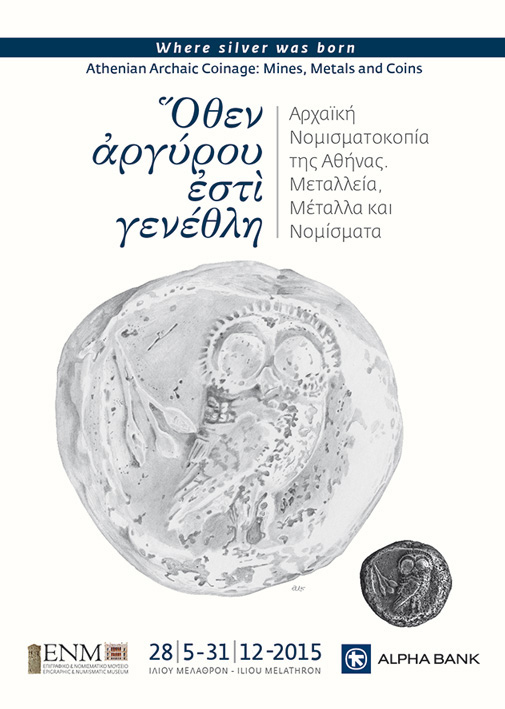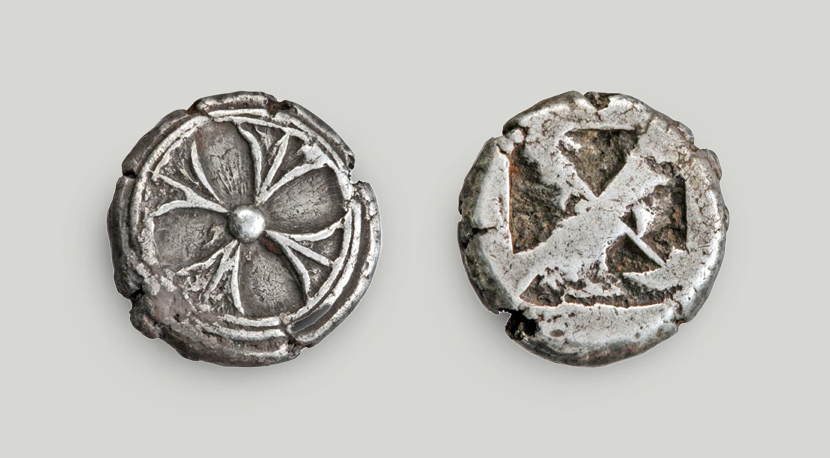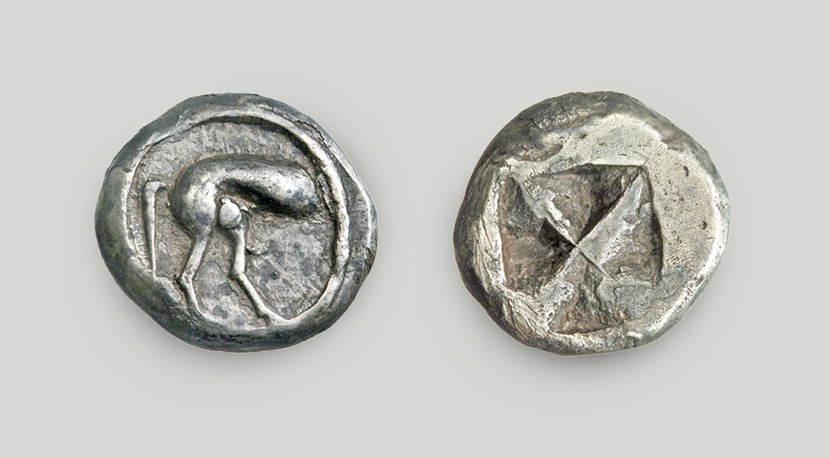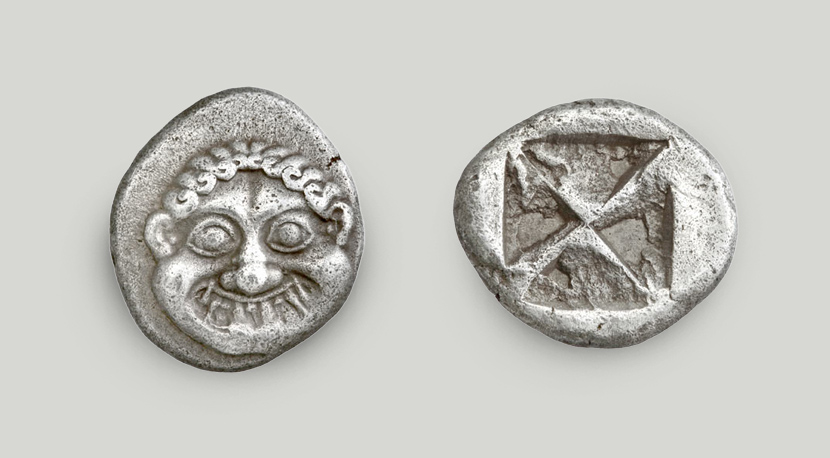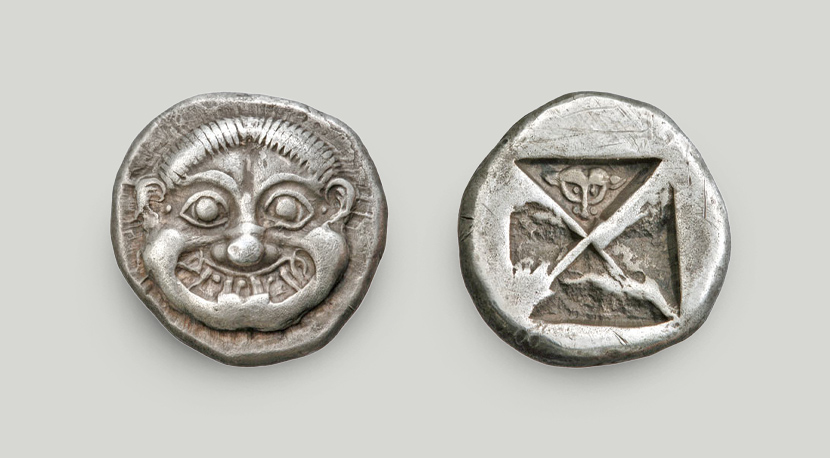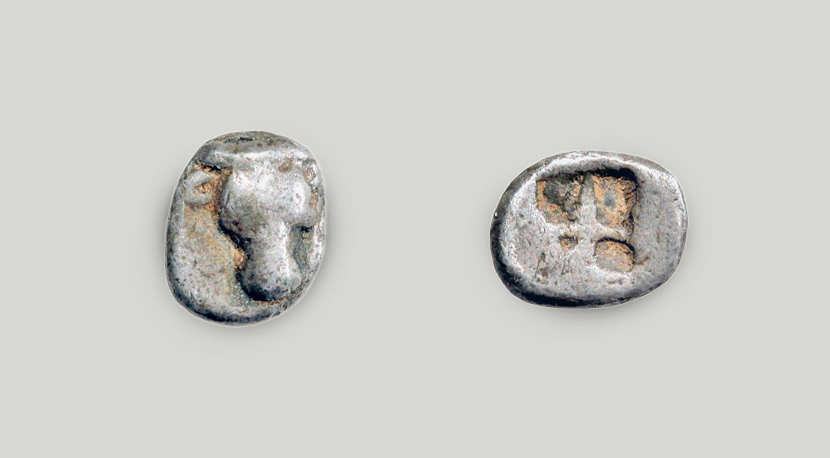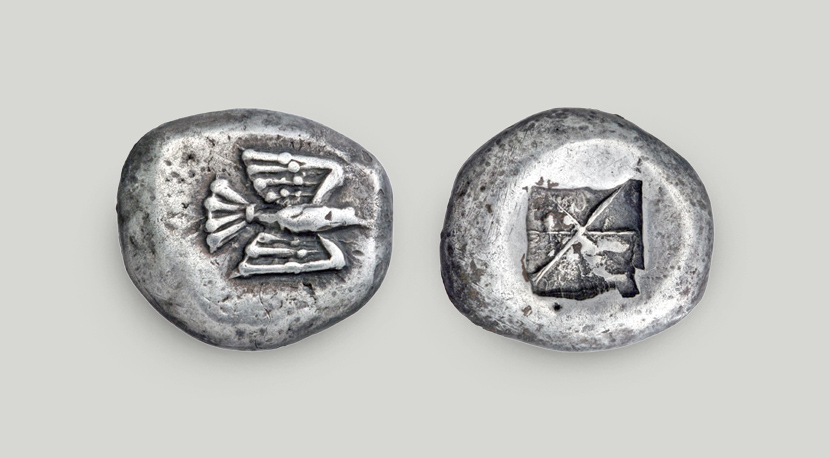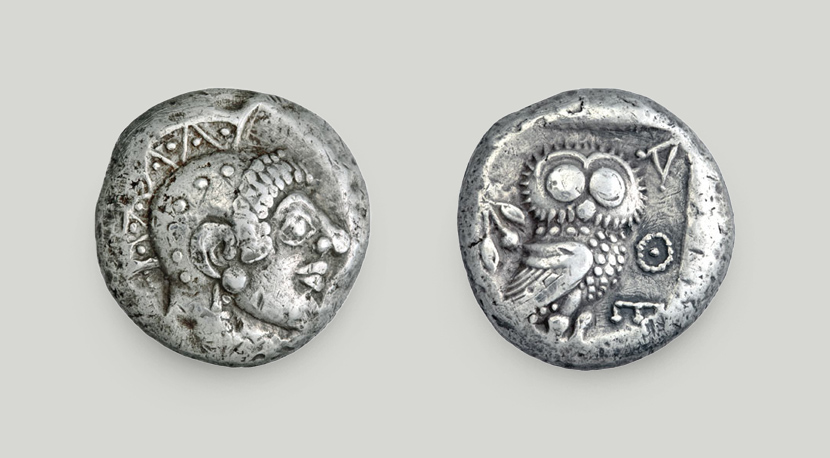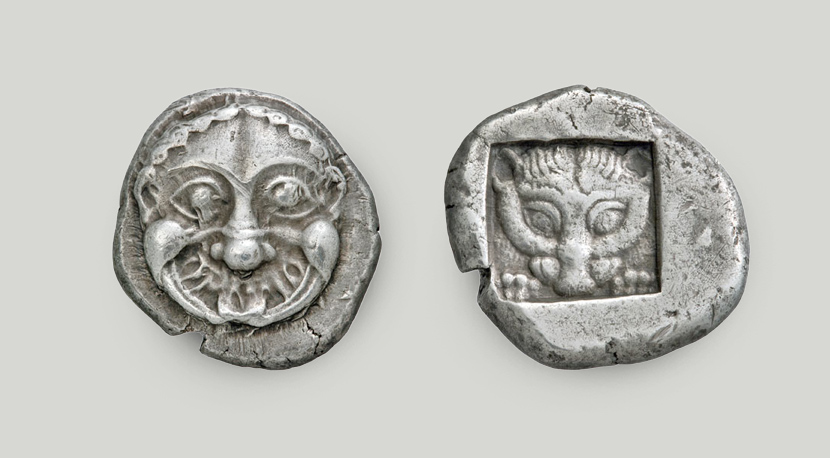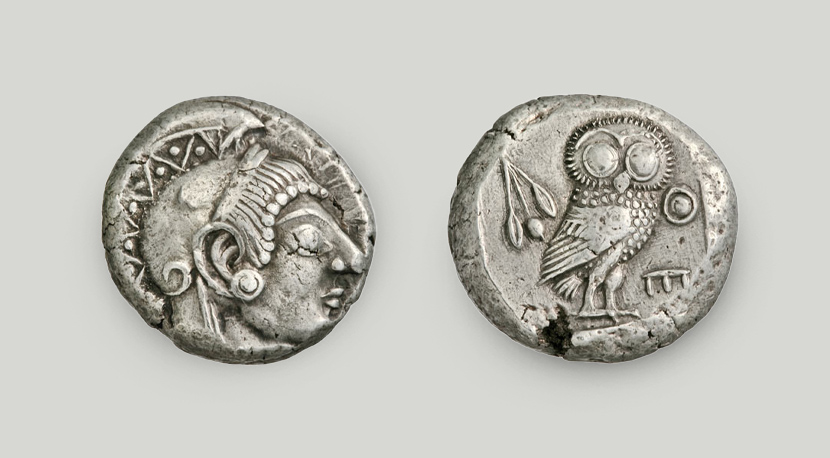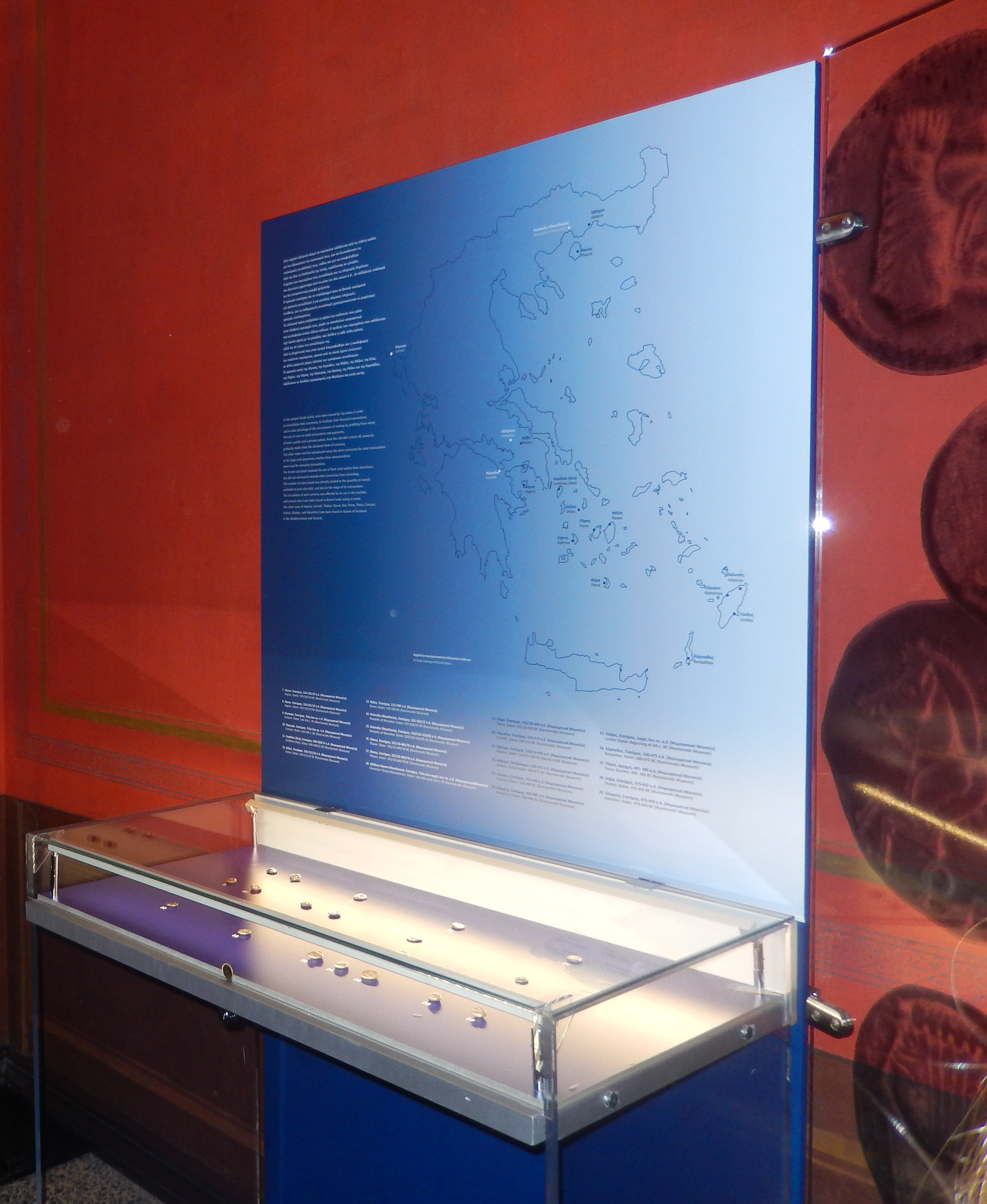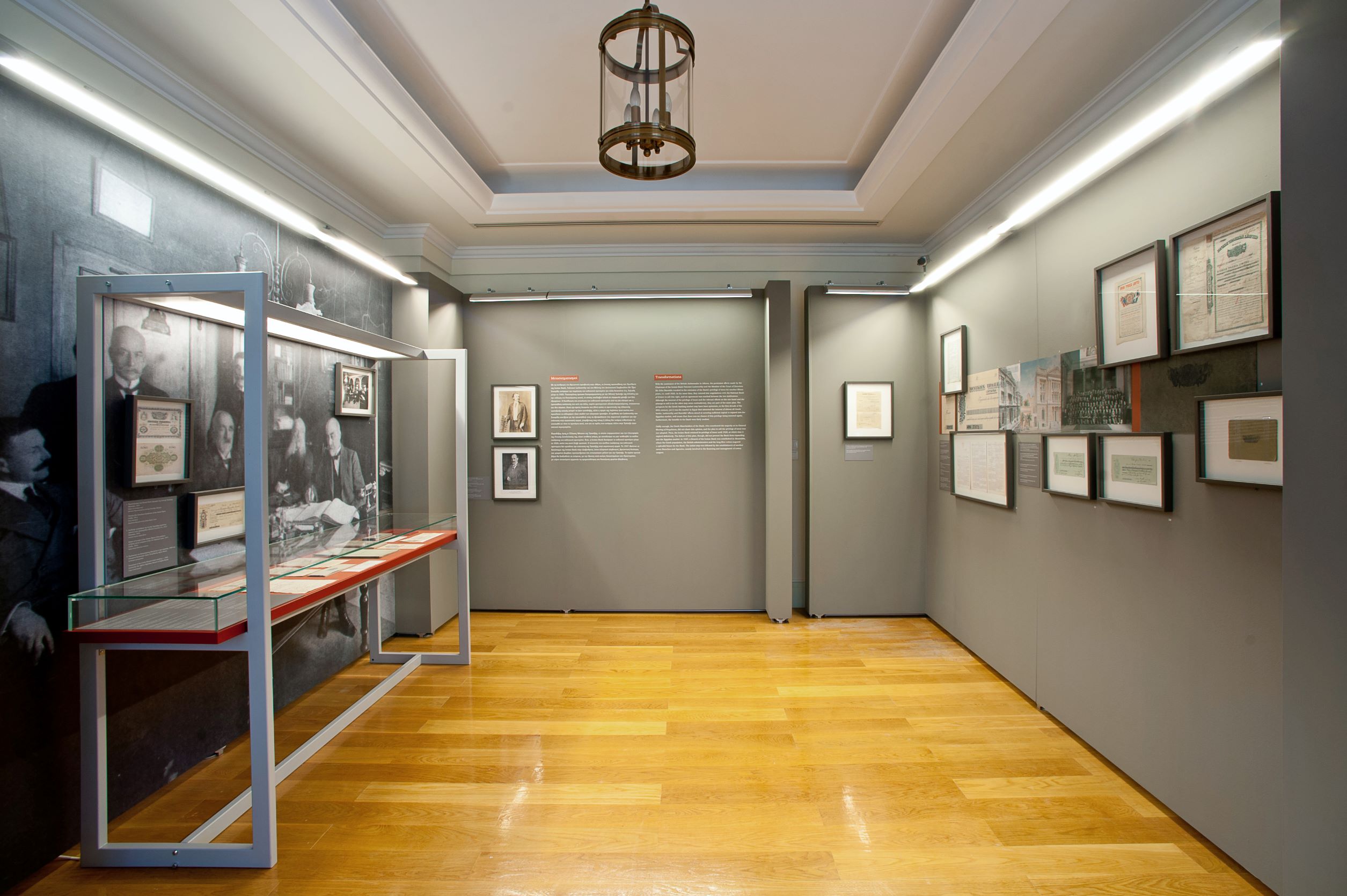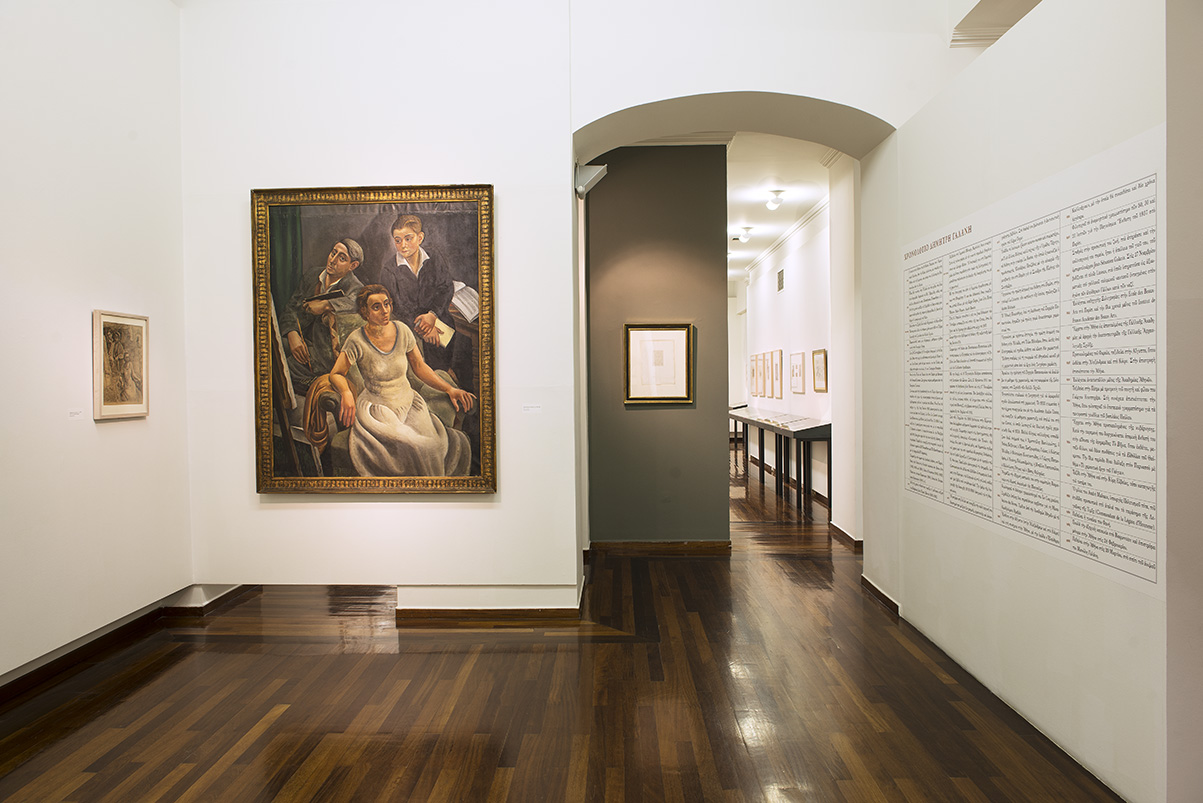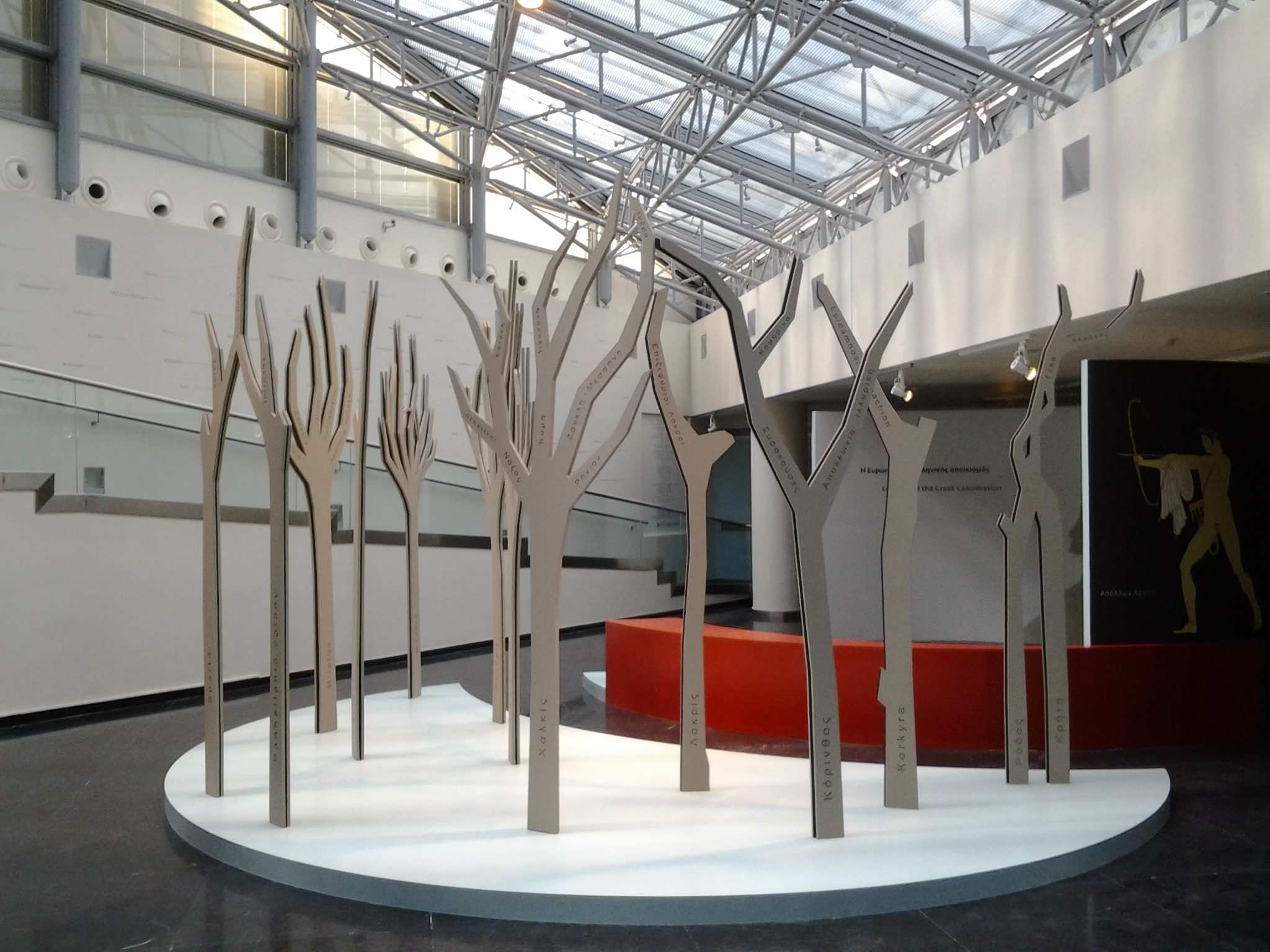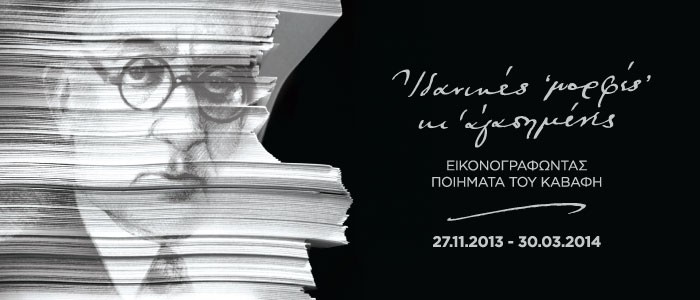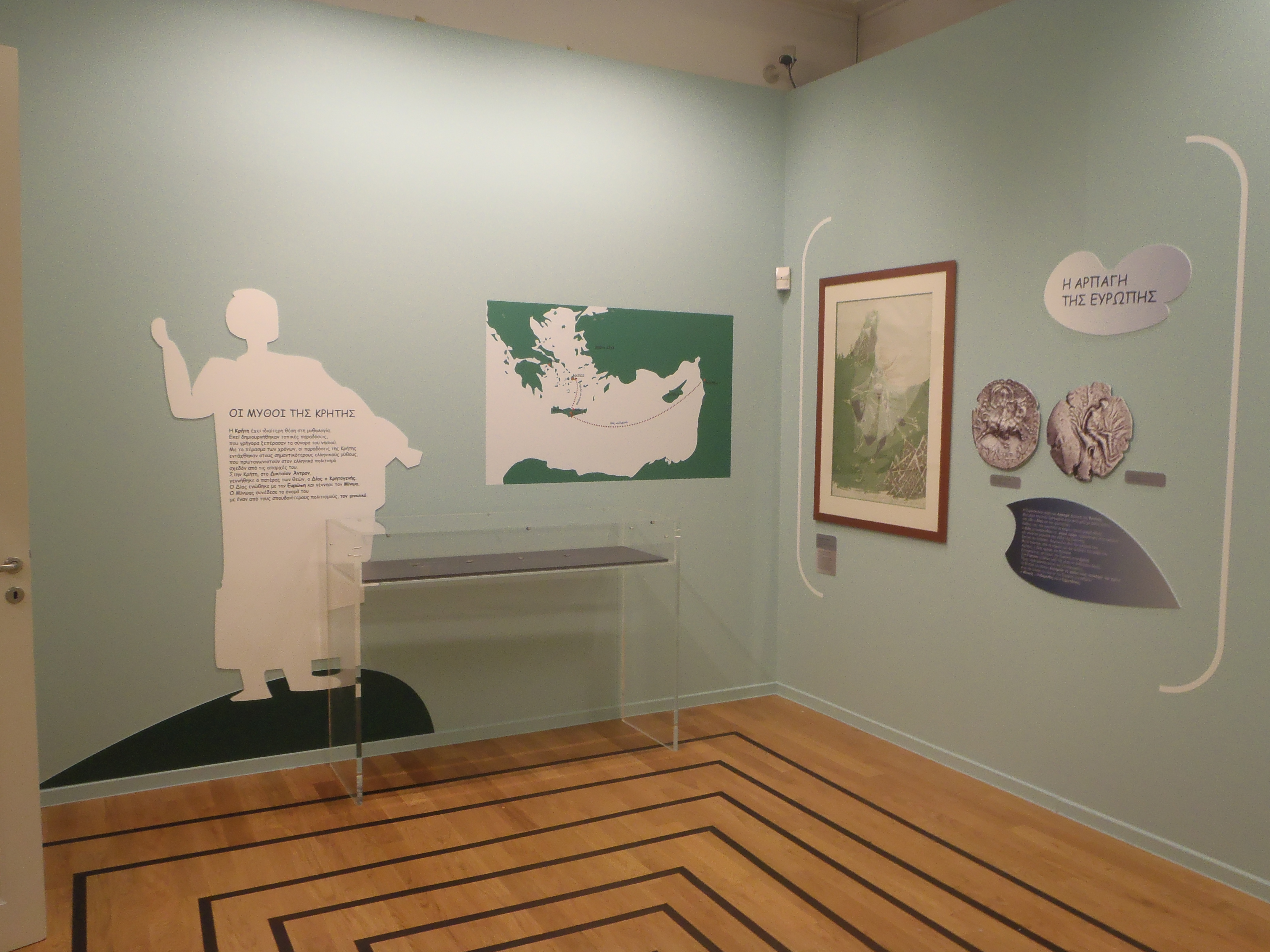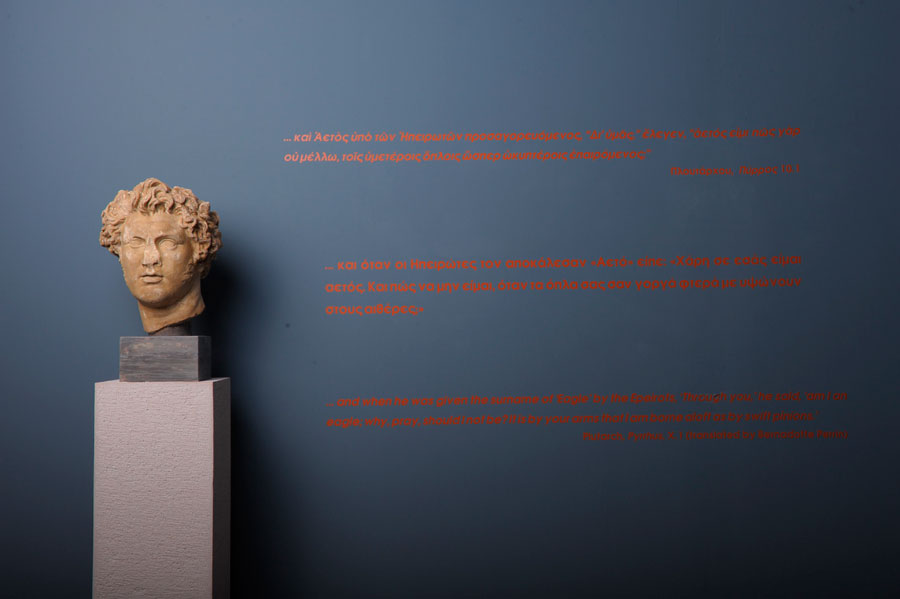ENDED
Participation in the exhibition “Where Silver was Born. Athenian Archaic Coinage”
The Alpha Bank Numismatic Collection loaned 10 coins to the exhibition “Where Silver was Born. Athenian Archaic Coinage: Mines, Metals and Coins”. The exhibition focused on the Archaic Era. That period was one of radical changes in society, political systems and art.
The Alpha Bank Numismatic Collection loaned 10 coins to the exhibition “Where Silver was Born; Athenian Archaic Coinage: Mines, Metals and Coins”:
- Silver hemiobol (Wappenmünzen), Athens, ca 550-530 BCE. The obverse depicts a bull’s head. An incuse square is struck on the reverse.
- Silver drachma (Wappenmünzen), Athens, ca 550-530 BCE. The obverse depicts a wheel. An incuse square is struck on the reverse.
- Silver drachma (Wappenmünzen), Athens, ca 530 BCE. The obverse depicts the hindquarter of a horse. An incuse square is struck on the reverse.
- Silver didrachm (Wappenmünzen), Athens, ca 530 BCE. The obverse depicts the front part of a horse. An incuse square is struck on the reverse.
- Silver didrachm (Wappenmünzen), Athens, ca 525-520 BCE. The obverse depicts a Gorgoneion (stylised Gorgon head). An incuse square is struck on the reverse.
- Silver didrachm (Wappenmünzen), Athens, ca 525-520 BCE. The obverse depicts a Gorgoneion (stylised Gorgon head). An incuse square is struck on the reverse, along with a very small head of a lion in one of the square’s 4 triangular sections.
- Silver tetradrachm (Wappenmünzen), Athens, ca 525 BCE. The obverse depicts a Gorgoneion (stylised Gorgon head). The reverse depicts a lion’s head within an incuse square.
- Silver tetradrachm, Athens, 500-480 BCE. The obverse depicts a head of the goddess Athena. The reverse depicts an owl and an olive branch, along with the legend ATHE.
- Silver tetradrachm, Athens, 500-480 BCE. The obverse depicts a head of the goddess Athena. The reverse depicts an owl and an olive branch, along with the legend ATHE.
- Silver stater, Sifnos, 500-525 BCE. The obverse depicts a flying eagle. An incuse square is struck on the reverse.
The exhibition focused on the Archaic Era, one of radical changes in society, political systems and art.
The subjects covered included:
- Archaic coinage.
- Ancient methods of mining and processing precious metals for minting purposes in Lavrion and on Sifnos.
The exhibition also included references to the history and institutions of the era. That period saw the establishment of rules governing the management and control of precious metal mining and trade.
Athens and Sifnos were among the first city-states to issue their own coinage. Of course, they also had their own mines.
